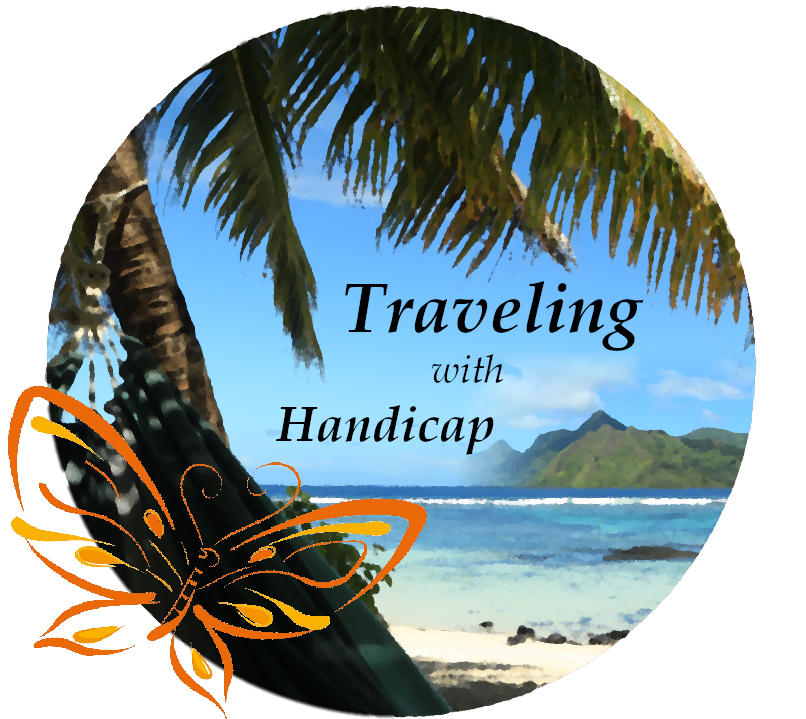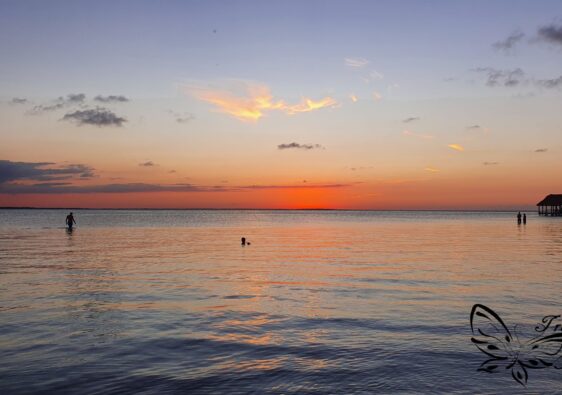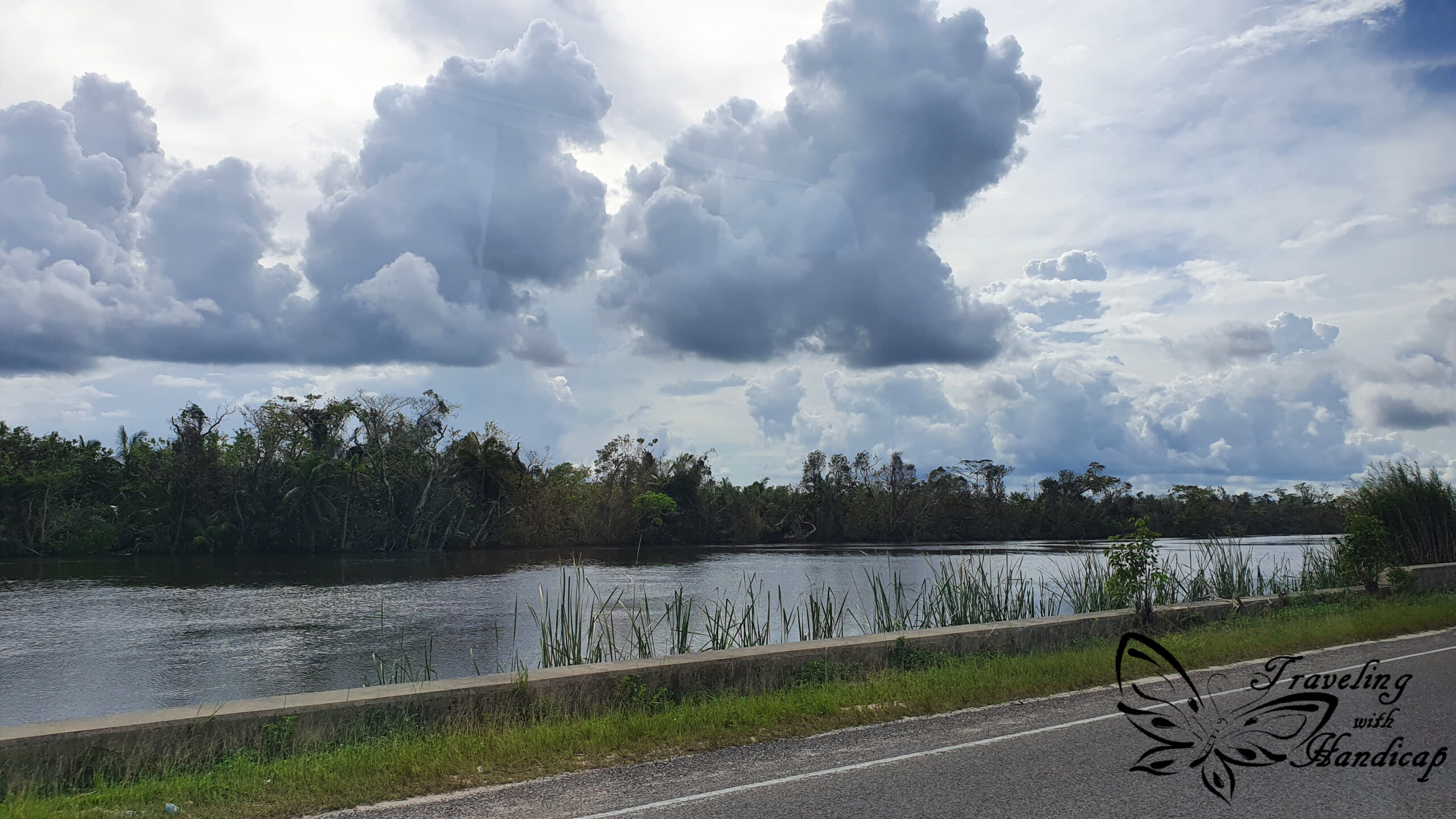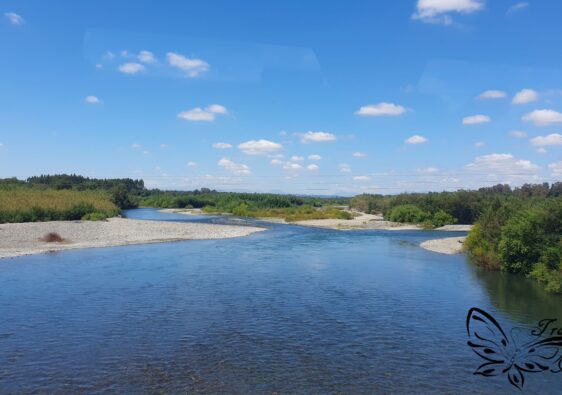A ruin should always be protected but never repaired
– thus may we witness full the lingering legacies of the past
Walter Scott
Within this article, I focus on the Mayan cities of Mexico and only slightly touch Tikal, Guatemala. The pictures of Tikal are available in its own respective article. Of course, there are many more Mayan ruins than the three which I mentioned. However, the guides keep telling that those three are the most important ones from Mayan perspective, with Tikal in the lead.
Chichén Itzá
Reaching Chichén Itzá from Valladolid
When traveling to surrounding places of a town, I learned that it’s the most convenient option to take a colectivo. Such colectivos are buses which can accompany ~15 people. You pay a reduced fare compared to a taxi, and the colectivo starts whenever it is full. So you might have to wait until all seats are occupied. However, this is not too inconvenient since the spots fill up quickly for all the touristy spots such as Chichén Itzá.
In order to reach Chichén Itzá, I took a colectivo before 7am, in order to be at the site before their opening time at 8am. I’d highly recommend this approach since all the tour buses from mainly Cancún arrive by 10ish, so you avoid the huge crowds by arriving early. There are also plenty of guides trying to offer you their service. The official guides have some badge and certain shirts, so they can be recognized well. If you arrive with other individual travelers, just share a guide, as they have fixed rates. Outside the park they tell you there won’t be guides available inside, however, if you walk in, there are other guides walking around for cheaper rates.
Accessibility of Chichén Itzá
Similar to Palenque I got in for free with my German disability card. I was quite surprised that this also counts for internationals, as mostly there is quite a difference in price compared to the rates for locals. In the park, I shared a guide with another girl who arrived with me from the same hostel. After the 1.5 hrs tour, we both went our own ways for pictures etc.
You might be able to get around Chichén Itzá on a wheelchair, however, the ground is a little rough, and therefore it might be a little uncomfortable. Colectivos are not made for wheelchair users, though, so you would have to use private transportation. I am not sure, though, if they have any wheelchair-accessible taxis in Mexico, I haven’t seen any. So most likely the only option is to be seated into a car and have a folding wheelchair which fits into the trunk.
Chichén Itzá
Honestly, our guide (and also others as I have heard) tell very basic stuff about the Mayans, so they speak about “one” Mayan language and “the” Mayan tradition. As I’ve learned in Guatemala already, there are more than 20 different Mayan languages still present in Guatemala, so I can’t imagine that there has been “one” language once. Especially since the Mayans covered quite some area across south-Mexico, Guatemala and further south.
Within the tour, we got Mayan carvings explained as well as the game Poktapok in its original form. Moreover, we learned about the stunning astronomical skills of the Mayans. It’s truly impressive how exact they have built their temples with respect to sun and moon phases etc. On specific dates of the year, you’ll experience particular constellations of light and shade across multiple buildings.
The tour only covered the central region of Chichén Itzá, afterwards, I went to the two Cenotes (which are not for swimming). Then, I searched for the Zona Sur. At first, I wasn’t sure whether I should walk there or just leave the site. However, FOMO won, and I was happy to have checked it out. Honestly, apart from the one famous big temple, the Zona Sur is far more beautiful. The tours don’t go there, so far fewer tourists. And the temples look much more original, like better kept and less artificially restored.
Apart from the crowds of tourists during midday, I was really embarrassed by the amount of people trying to sell stuff. I could only look straight while walking, since whenever you just had a slight look to the left or right, these people swallowed out words to get you buying something. They also tried to get “easy sales” by shouting “200 pesos, just 1 dollar”, even though 200 pesos are equivalent to 10 dollars. Another hint of what you need to be careful of when traveling across Mexico…


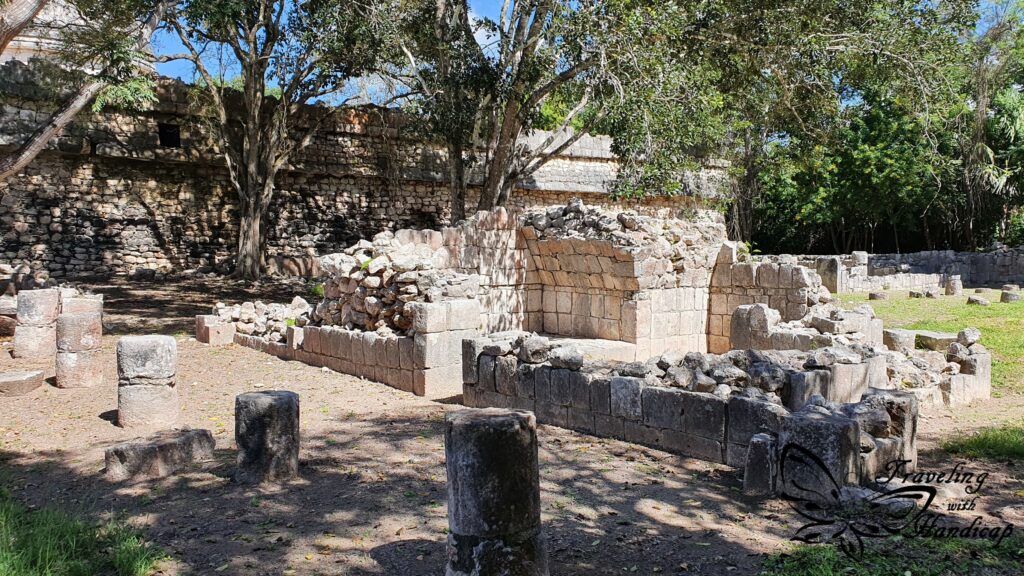
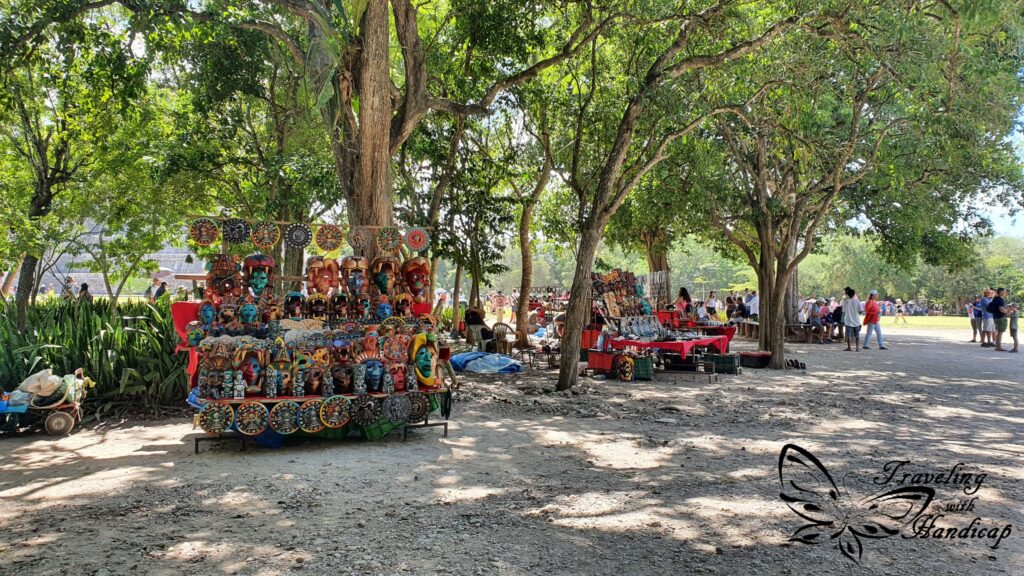

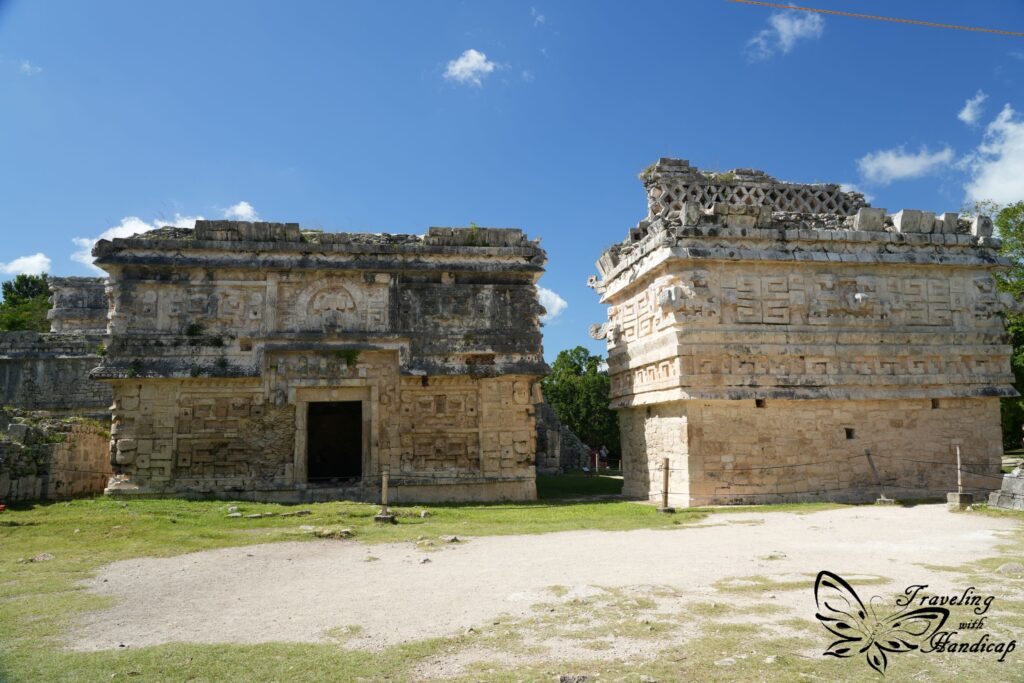
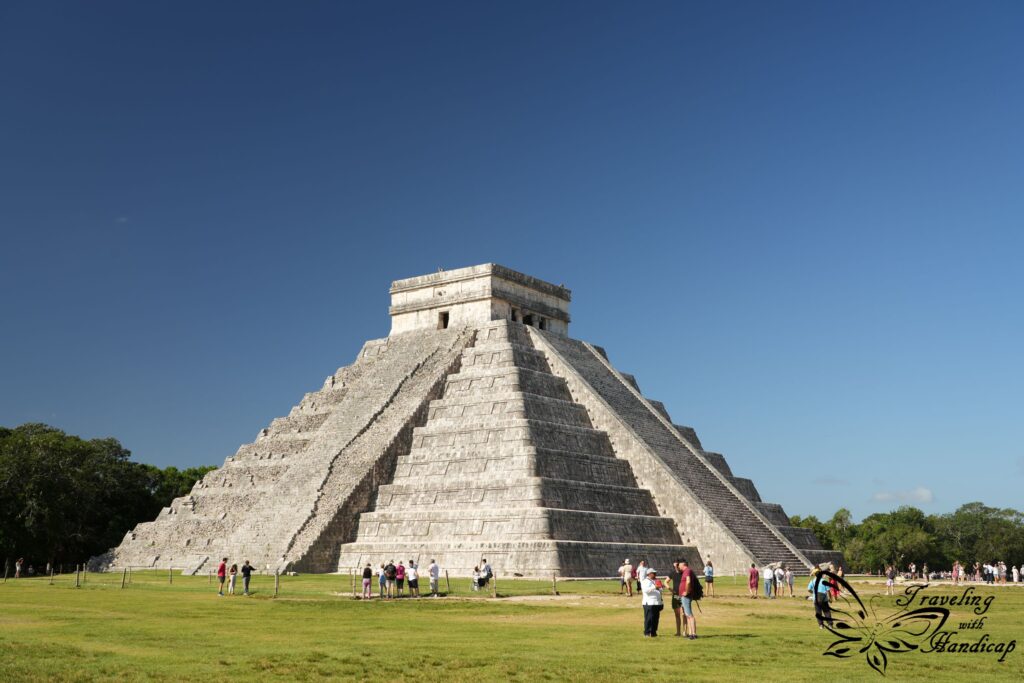
Visiting one of the cenotes around Valladolid
There are many cenotes around Valladolid. I went to Ik kil since the colectivos to Chichén Itzá also stop there. This is why there are many tours which stop at that cenote. If you want to reach other cenotes, you might have to rent a scooter. However, since I am not able to keep balance on a scooter, I decided for this cenote, but in the morning hours. I went there on my second day in Valladolid. Of course, that means paying for the colectivo twice, but I didn’t want to have one overfull day. Moreover, during morning hours, there were almost no people in the cenote.
There are changing rooms, you get a locker and a vest. After a mandatory shower, you may walk down through the stairs in a tunnel until you reach the water level. This particular cenote was partly covered by stone, half of it was open to the outside. This way, some sunshine reached the water level. There were even fish living in the cenote. I stayed for quite some time, just floating around to some silent and relaxing music, just before I started to freeze.

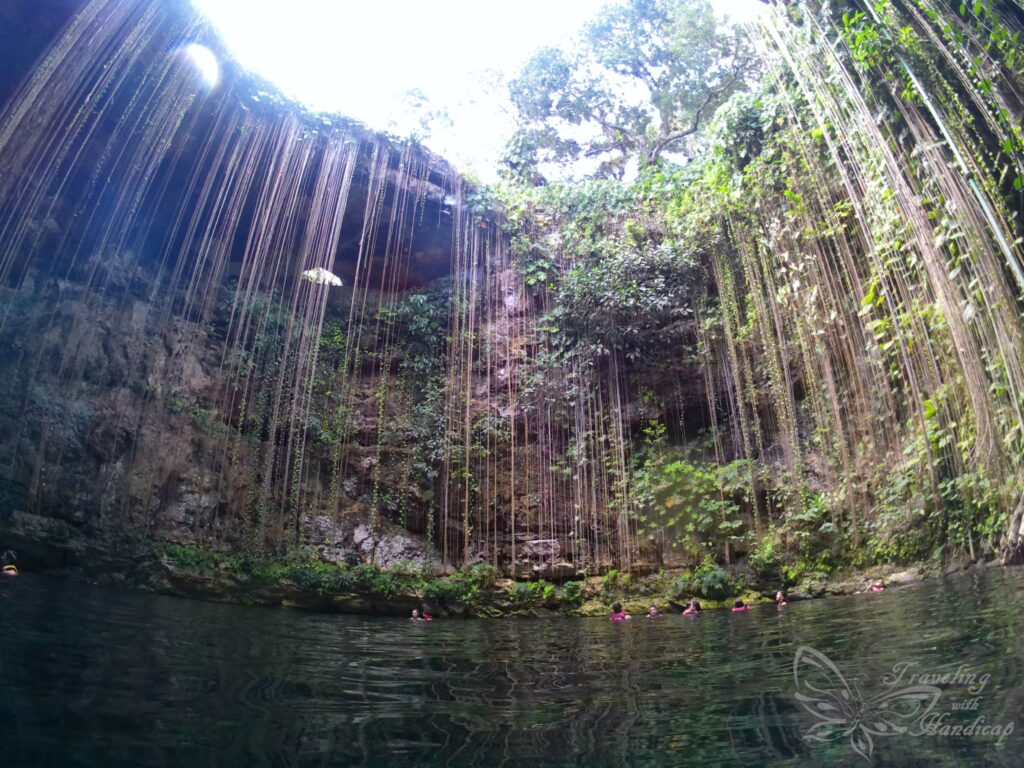

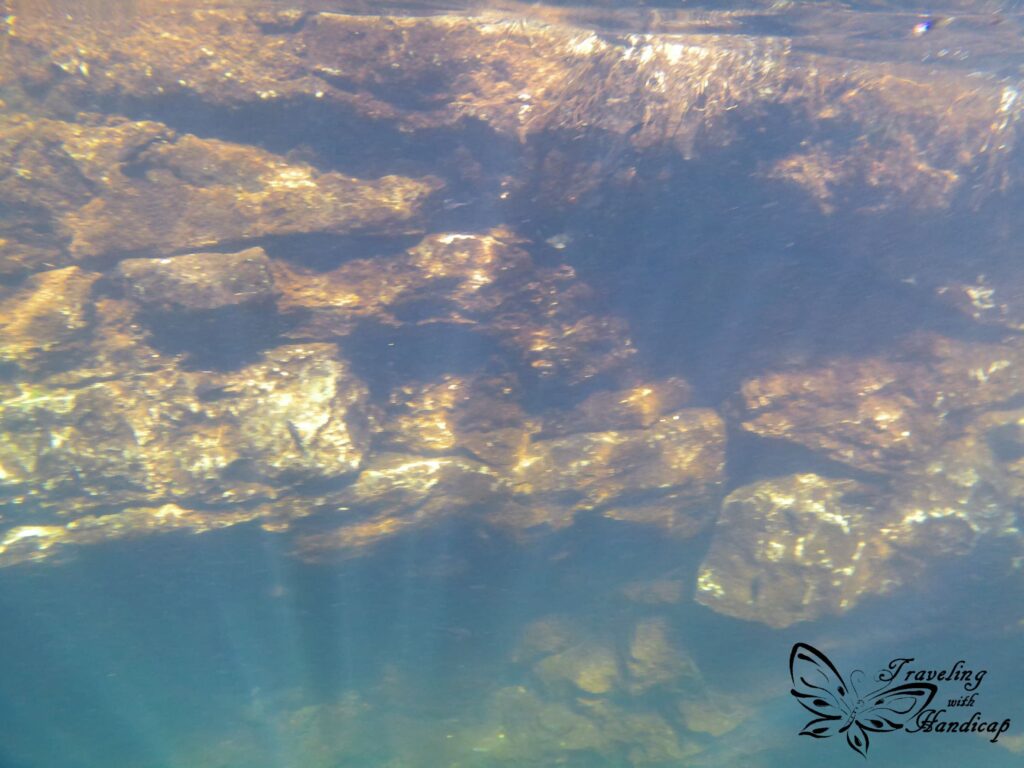

Palenque
After visiting Chichén Itzá with a guide, I decided to walk around Palenque on my own. Palenque is not as big, and there are explanatory descriptions available in Spanish and English at all temples. This is convenient, so you don’t need a guide for the archeological site. However, guides also offer services for jungle tours. Apparently, there are still plenty of temples hidden in the jungle. Infrared cameras pointed out plenty of other stone constructions.
I didn’t go for the jungle tour, however, other travelers told me that you basically walk around in porcelain-similar stuff from Mayan times. If you find the way in and out on your own, you could collect plenty of remaining things and sell them, making a lot of money. That’s actually how I expect that the rich people of Palenque made their earnings. I only did a 2 km hike into the jungle on a path, just to check out the plants for a bit, because then I won’t get lost.
The ticket office is not near the entrance, so the colectivo from Palenque stopped at the ticket office first and brought us to the entrance after. This was convenient because it’s quite uphill. I liked Palenque much more than Chichén Itzá, for two reasons. At first, it’s much less crowded, not as many tour groups are heading to Palenque, rather individual travelers. Secondly, the whole site looks much more original as it’s still half in the jungle. Moreover, in contrast to Chichén Itzá, you were allowed to climb the temples, which was cool. I spent quite some time on specific spots, in the shade with great view.
It has to be mentioned that the archeological site of Palenque is not really accessible by wheelchair.




Tikal
As mentioned above, I’ve written an own article just about Tikal and a bit of Flores. Within this context, I would like to mention that there are some similarities and differences to Chichén Itzá and Palenque in Mexico.
At first, there are no colectivos, you need to book the transportation as a tour. The shuttles are a little bigger than colectivos and head off at specific times. You may book Tikal with or without a guide. However, in contrast to Chichén Itzá which can definitely be well visited without a guide, I highly recommend a guide for Tikal. Guatemalan guides offer many more insights. 😉
Unfortunately, you miss out on the best spots if you visit Tikal with a wheelchair. You might get around, however, sometimes you might need to cross flooded pathways, and there are steeper paths. My most stunning experiences were at the top of certain temples, enjoying the view, but therefore you have to climb many stairs. The entrance fee for Tikal is similar for all internationals, I didn’t get in for free or reduced fee with my disability card as in Mexico.
There are no people selling souvenirs within the Tikal site, only outside there are very few places. I really appreciated this since it enables to fully concentrate yourself on the temples and nature. The animals are so abundant, many of which I haven’t seen before. You might hear some monkeys in Palenque, but that’s about it if you don’t do a jungle tour. There are no animals around Chichén Itzá, well, even though some tourists behave as rude that they could be considered an animal…
